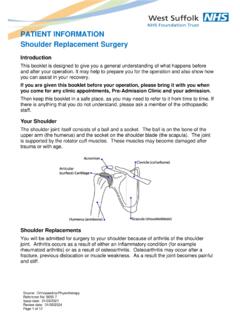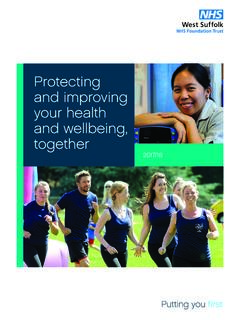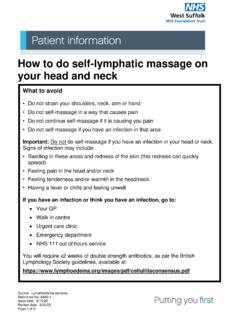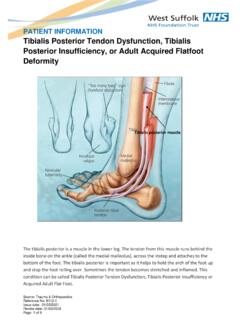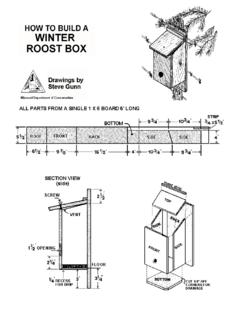Transcription of Bubble PEP - Bubble Positive Expiratory Pressure
1 Source: Physiotherapy Reference No: 6242-1 Issue date: 19/9/19 Review date: 19/9/22 Page 1 of 3 Bubble PEP ( Bubble Positive Expiratory Pressure ) What is Bubble PEP? PEP is short for Positive Expiratory Pressure . Bubble PEP is a technique used to help adults or children who have a build-up of phlegm (secretions) in their lungs and struggle to clear them. The technique involves blowing bubbles through water. How does it work? During the technique as you blow out and make bubbles in the water, a Positive Pressure is created within the tubing and transferred into the airways in your lungs. This Positive Pressure helps to hold open your airways, allowing more air to flow in and out. The air can then get behind the phlegm helping to move it more easily upwards through the open airways.
2 You should then be able to cough or huff (as instructed by your Physiotherapist) and clear the phlegm from your lungs. What equipment is needed? A 2 pint milk or fruit juice carton with a flat base thoroughly washed. Page 2 of 3 Technique Your Physiotherapist will show you how to use Bubble PEP, but the following instructions will help to remind you. 1. Take a deep breath in (without the tubing in your mouth). 2. Blow out through the tubing (creating bubbles in the water) for as long as possible. 3. Repeat this _____ times, making sure that you catch your breath between each blow out. This is one cycle. 4. Then huff (forced Expiratory technique) or cough to try and clear your phlegm as instructed by your Physiotherapist. 5. Always try to spit the phlegm out rather than swallow it.
3 6. Have a short rest to catch your breath. 7. Repeat the cycle _____ times. 8. Carry out this treatment _____ times a day. 9. After using the equipment it should be washed and left to dry in a clean place until it is next used. 10. The bottle and tubing should be changed once a week to reduce the risk of infection. Precautions Bubble PEP is not known to cause any side effects. However, if you do experience any problems with your breathing whilst using this technique, then please stop using it and contact your Physiotherapist or a Health Professional (see contact details overleaf). Always make sure that you blow out through the tubing and do not suck in the contents of the bottle. Only carry out the number of breaths suggested by your Physiotherapist as too many breaths can make you feel dizzy.
4 The cold water level should reach to approximately half way (about 1 pint). For children it can be fun to add a few drops of washing-up liquid or food colouring to the water, so a tray may need to be placed underneath the bottle to catch the bubbles! Page 3 of 3 If you notice any blood in your phlegm after using Bubble PEP, then stop using it and contact your Physiotherapist or a Health Professional. If you experience any shortness of breath or chest pain using this technique then stop immediately and seek help. Useful contacts Physiotherapy department West Suffolk Hospitals NHS Trust, Hardwick Lane, Bury St. Edmunds, Suffolk IP33 2QZ Tel: 01284 713300 If you would like any information regarding access to the West Suffolk Hospital and its facilities please visit the website for AccessAble (the new name for DisabledGo) West Suffolk NHS Foundation Trust bluebird Lodge, Ipswich 01473 322100 Paddock house , Eye 0333 321 8604



